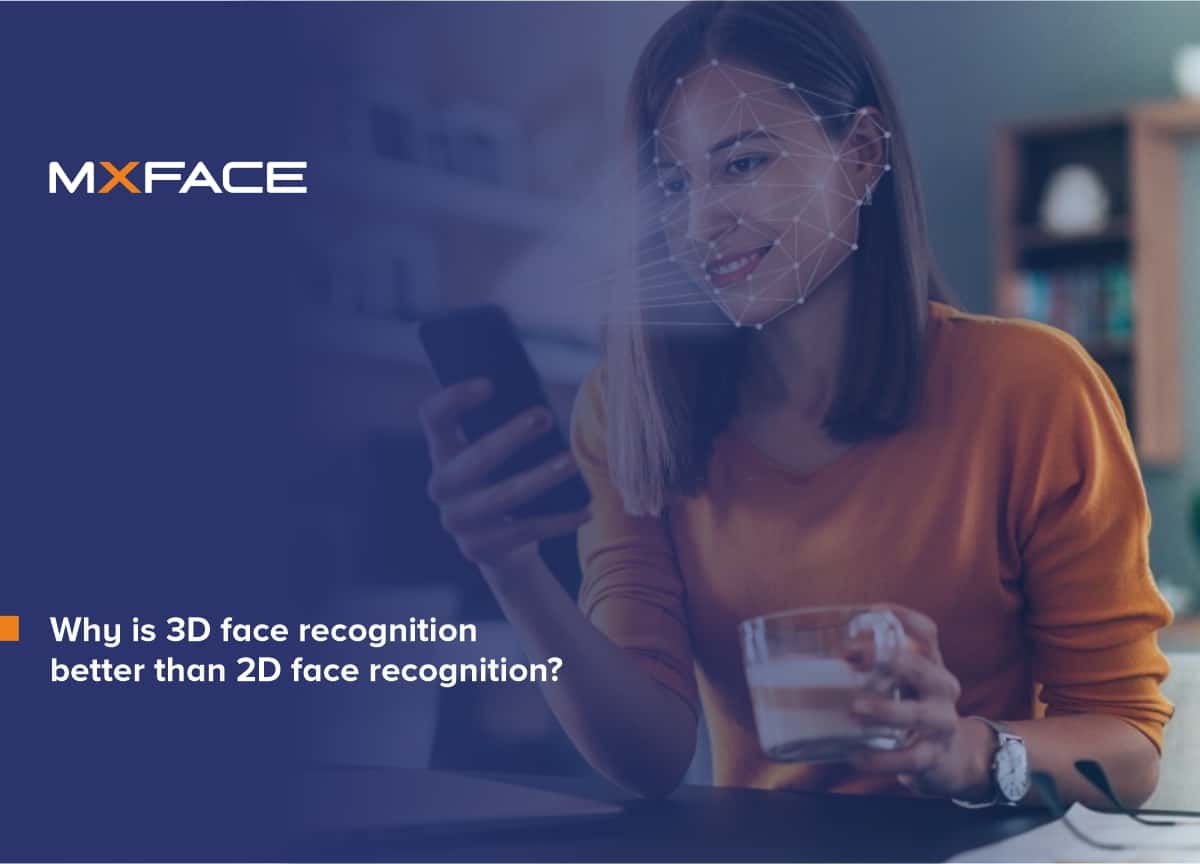Why is 3D face recognition better than 2D face recognition?

Face recognition is one of the most reliable identification methods for surveillance, security, and ID verification applications. Nowadays, 3D versus 2D is an important consideration when selecting a face recognition system for any application. Before we get into the specifics, let's go through the main challenges of identifying a face. In fact, the ability to overcome these challenges defines efficiency. For example, facial recognition in direct sunlight, under varied lighting conditions, and in various poses. Another critical factor is maintaining a database and liveness detection of faces for identification. 3D facial recognition was one of the results of thinking way ahead to tackle the issues with 2D face recognition.
On the other hand, customers prefer both 2D and 3D face recognition for diverse applications since the features of both might be valuable in different contexts. Continue reading to learn why 3D recognition is superior to 2D recognition.
2D and 3D face recognition
Only the 3D method is explicitly acknowledged, whereas the 2D method is referred to as facial recognition. The 2D approach recognizes a face from an image, the simplest way to identify a face. Over time, hackers also evolved to spoof the 2D with presentation attacks. Various liveness detection algorithms have been developed to differentiate between human skin and photographs, although the 2D method is very dependent on the lighting and human positions.
3D face recognition paved the way for new advancements in computer image recognition technology. Using a depth sensor or laser mapping, the 3D techniques read the depth and curvature of the face. The geometric features in a 3D image contain data that can increase the accuracy of facial detection under conditions that are difficult for 2D recognition. Since the data read in the 3D method is sophisticated, the data acquisition, processing, storing, and identification.
Why 3D over 2D recognition?
Without a doubt, 3D recognition is more advanced than 2D recognition. The following are some significant aspects that truly offer the 3D recognition advantage over 2D recognition.
3D is more feature-rich.
Features or characteristics acquired from a face must be adequate for identification. As the features increase, so the accuracy of recognition also increases. 3D recognition reads depth, curvature, and geometrical features to construct the 3D model of the image, which creates a robust database for faces.
Liveness detection: 2D or 3D?
The 2D recognition method needs additional sensor or algorithm support to detect the liveness of the face that is independent of the real 2D camera algorithm. On the other hand, 3D creates a three-dimensional digital model of a face that somewhat confirms the liveness. The 3D model is itself foolproof against presentation attacks like fake image presentations.
The pose doesn't matter at all.
If the participant is not facing the camera directly, the 2D system cannot recognize a face. A change in camera angle or face position may result in incorrect identification of a person. Laser 3D recognition techniques capture different poses of a face keeping the nose as the center point of detection to create the model. As a result, it can recognize a person from various angles. It is advantageous in terms of security, monitoring, and ID authentication.
Cost consideration
Regarding system cost, 3D technology is somewhat more expensive than 2D. But considering the added advantages like liveness detection, accuracy, and convenience, the cost hike becomes negligible. The precision of detection offers credibility to any business that directly implies better ROI. In addition, the ease of recognizing a face from various angles helps minimize the number of cameras employed in a closed circuit.
Conclusion
3D face recognition is the most popular area of research in the academic and commercial sectors. More and more research focuses on improving AI to detect and create a better 3D model of a face. 3D facial recognition will soon become widespread in access control, automated driving, the aviation sector, security, and surveillance.


Comments